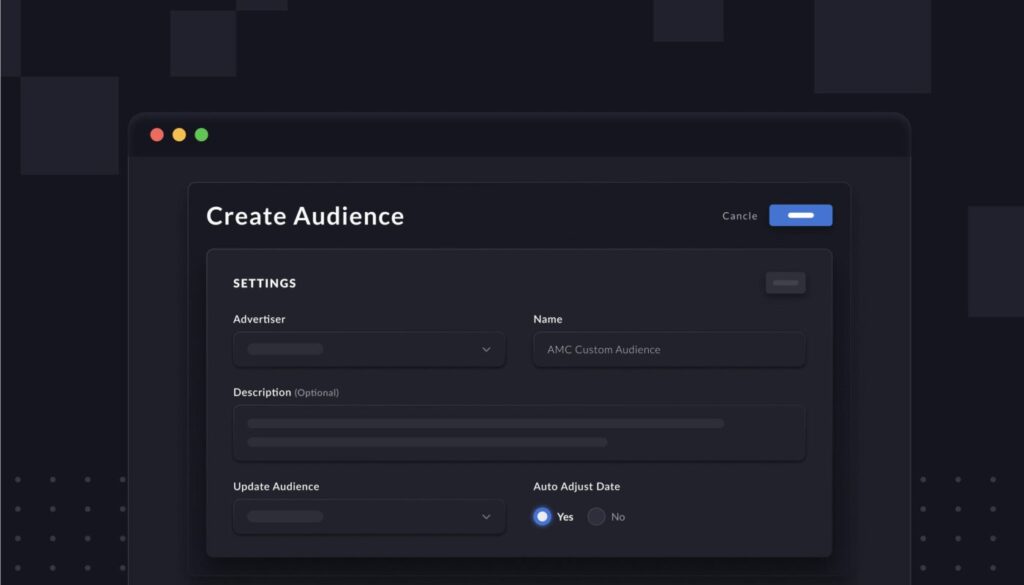Before you use Amazon Marketing Cloud, you need to be incredibly thoughtful about naming and labeling your ad campaigns.
That’s one of our big takeaways from the last several months of exploring the ins and outs of AMC, Amazon’s newest—and very powerful—data analytics tool.
We are excited about the potential of AMC. We’ve seen how effective it is at unlocking paths to purchase, life-time value, and other critical new data points for your brand.
But AMC, like any tool, has a number of notable challenges that many new users might not expect. For example, we recently discussed the limitations of AMC’s pre-written instructional queries.
Today, we wanted to highlight another series of pain points in AMC.
In essence: AMC’s insights are great, but if you want to adapt them to your company, you will often have to enrich the data by layering on campaign IDs, separating out DSP ad formats, and more.
Here are three common pain points to expect:
1. AMC does not include campaign IDs for sponsored ads
Here’s a potential surprise: Did you know that AMC doesn’t give you campaign IDs for your sponsored ad campaigns?
That becomes an issue if someone on your team has changed your campaign names over time. Say you have a campaign that started in January and it was called “Campaign A.” Then, in March, you renamed it “Campaign B.” If you were running an AMC query that looked at data from January, you would need to filter for “Campaign A,” even though it’s currently called “Campaign B.” Meanwhile, if you had the campaign ID, that never changes.
How do you get around this? Enrich your data.
At Intentwise, for instance, we pull the results from AMC into our own custom dashboard, Intentwise Analytics Cloud. From there, we use the campaign ID to find the most up-to-date Campaign Name, and run the query in AMC automatically.
That way, your results from AMC will be more meaningful and easier to analyze going forward.
2. Separating out your DSP ad formats isn’t so easy
Another issue comes to tracking DSP ads within AMC. As you probably know, there are a wide variety of DSP ads:
- Display ads
- Streaming video ads
- Mobile banner ads
But on AMC, all of those various ad formats are only identified as a catch-all “DSP ad.” That can be a major problem, because you will have different performance expectations for a DSP display ad vs. a DSP streaming ad.
When you run your analyses in AMC, you will want to be able to break out these different types of DSP ads. Take path to purchase: When you map a customer path in AMC, it makes a big difference whether the shopper watched a DSP streaming-TV video or simply saw a DSP display ad.
Amazon won’t break this out for you, so how can you get around it?
You have to be smart about naming. Make sure your campaigns all have distinct naming conventions that identify the streaming DSP video vs. the DSP display ads, for example.
You will need to rely on those names in order to differentiate between DSP ad types when you push your data out of AMC. Make sure your naming is consistent, too. If someone breaks the campaign naming convention, then your query results will be susceptible to errors.
3. Operating multiple advertising accounts can be a challenge
First, some terminology: An AMC instance is a seat at the table for your organization to use AMC. Think of an instance like a DSP seat, but for AMC.
Generally when you use AMC, you only get 1 AMC instance. That’s true regardless of your size. If you’re an agency that operates 100 brand accounts, or if you’re a brand with multiple different Amazon accounts, you’ll probably only need 1 instance.
Here’s why this matters: When you have multiple different advertising entities, linked to 1 AMC instance, AMC doesn’t automatically know which account you want referenced in the results.
Say you’re implementing a path-to-purchase query. If you want to focus on the path to purchase just for Brand A, and exclude sponsored ads data for Brand B and Brand C, you need to do it yourself.
AMC won’t make those separations automatically. So if the same customer interacts with sponsored ads from both Brand A and Brand B on their journey, your data will be tainted—unless you separate out the sponsored ads by brand.
So where does that leave us?
In the grand scheme of things, these pain points shouldn’t stop you from leveraging AMC. The potential of AMC is too great to pass up.
Rather, as you begin your journey with AMC, you should keep these challenges top of mind. A little preparation can go a long way.
Want more content like this every week? Be sure to subscribe to our weekly newsletter.

![[AMC] Blog Post [AMC] Blog Post](https://www.intentwise.com/blog/wp-content/uploads/elementor/thumbs/AMC-Blog-Post-scaled-q7it77mts3t6x4nzdbjpbl10er9tirah59q49szjgg.jpg)





